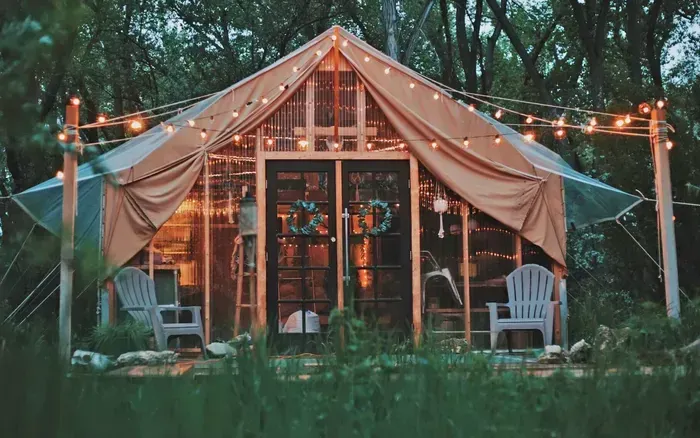In a world where housing prices continue to climb and sustainability becomes increasingly essential, tent homes offer a unique and affordable alternative for those seeking freedom, adventure, and simplicity. These structures, once reserved for camping or temporary shelter, are now evolving into full-time residences equipped with modern amenities and creative design. Tent homes appeal to eco-conscious individuals and digital nomads alike, as they often require fewer materials to build, leave a smaller environmental footprint, and provide the flexibility to relocate with ease. The blend of mobility and comfort makes tent living a compelling option in today’s housing market.
Modern tent homes are far from basic canvas structures. Many are engineered using high-quality materials that withstand various weather conditions while remaining breathable and lightweight. Interiors can be surprisingly luxurious, featuring insulation, solar power, composting toilets, and even kitchenettes. The popularity of glamping (glamorous camping) has inspired many to rethink what a "home" looks like, blurring the line between outdoors and indoors. Whether as a primary residence, guest accommodation, or off-grid retreat, tent homes provide an opportunity to live intentionally, connect with nature, and embrace a lifestyle rooted in simplicity and resourcefulness.
What Are Tent Homes?
Tent homes are semi-permanent or permanent structures modeled after traditional tents but built for long-term use. These dwellings can range from simple yurt-style designs to more elaborate, custom-built tents with wood framing and weatherproof exteriors. Often used in eco-communities or as part of off-grid living setups, tent homes provide a comfortable and minimalist housing option.
Benefits of Tent Homes
Tent homes are not only cost-effective but also environmentally friendly. They generally require fewer materials and less energy to build and maintain. Their design encourages a closer relationship with nature while promoting mindfulness in space usage and consumption. These benefits make them a sustainable choice for individuals and families alike.
Considerations Before Moving In
Before committing to tent living, it’s important to consider climate, zoning laws, and your personal lifestyle needs. While modern tent homes can be equipped with insulation and solar panels, extreme climates may still pose challenges. Additionally, some regions may have regulations regarding the legality of semi-permanent structures, so research and planning are essential.
Conclusion
Tent homes represent more than just a housing trend—they are a lifestyle choice grounded in freedom, sustainability, and creativity. As more people seek alternatives to traditional living, these innovative dwellings offer a balance between comfort, mobility, and ecological responsibility. Whether for weekend escapes or year-round living, tent homes redefine the meaning of home.

